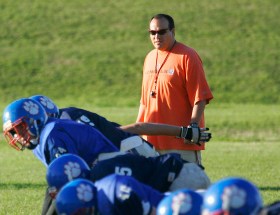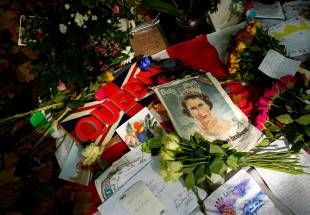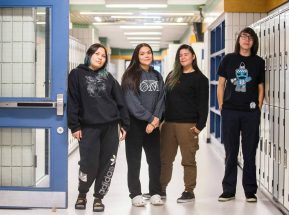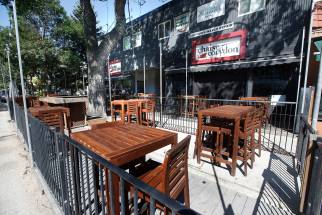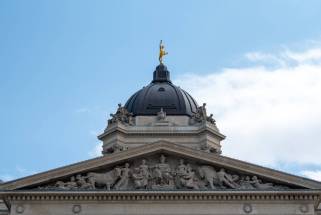Higher learning 600-kilometre commute high price to pay for First Nations students in quest for high school diploma
Read this article for free:
or
Already have an account? Log in here »
To continue reading, please subscribe:
Monthly Digital Subscription
$0 for the first 4 weeks*
- Enjoy unlimited reading on winnipegfreepress.com
- Read the E-Edition, our digital replica newspaper
- Access News Break, our award-winning app
- Play interactive puzzles
*No charge for 4 weeks then price increases to the regular rate of $19.00 plus GST every four weeks. Offer available to new and qualified returning subscribers only. Cancel any time.
Monthly Digital Subscription
$4.75/week*
- Enjoy unlimited reading on winnipegfreepress.com
- Read the E-Edition, our digital replica newspaper
- Access News Break, our award-winning app
- Play interactive puzzles
*Billed as $19 plus GST every four weeks. Cancel any time.
To continue reading, please subscribe:
Add Free Press access to your Brandon Sun subscription for only an additional
$1 for the first 4 weeks*
*Your next subscription payment will increase by $1.00 and you will be charged $16.99 plus GST for four weeks. After four weeks, your payment will increase to $23.99 plus GST every four weeks.
Read unlimited articles for free today:
or
Already have an account? Log in here »
Hey there, time traveller!
This article was published 16/09/2022 (1178 days ago), so information in it may no longer be current.
Shaundria Yellowback travelled almost 600 kilometres by plane — a 90-minute flight via Perimeter Aviation — to get to class for the first day of Grade 12.
The 17-year-old has become accustomed to the lengthy back-to-school commute since September 2020; it was then she made the difficult decision to leave God’s River and the close-knit community she grew up in to complete the latter years of high school.
“I get homesick pretty often. Not as much as I did (when I first moved), but I still get homesick — mostly for my parents because they’re awesome people and who wouldn’t miss their parents?” said Shaundria, who just started her final year at Maples Collegiate in Winnipeg.
Not unlike her four older siblings, most of Shaundria’s 22 classmates chose to stay put with a Grade 9 education, the highest level offered on the remote reserve.
MIKAELA MACKENZIE / WINNIPEG FREE PRESS Shaundria Yellowback is originally from God's River First Nation and had to move to Winnipeg to complete high school at Maples Collegiate.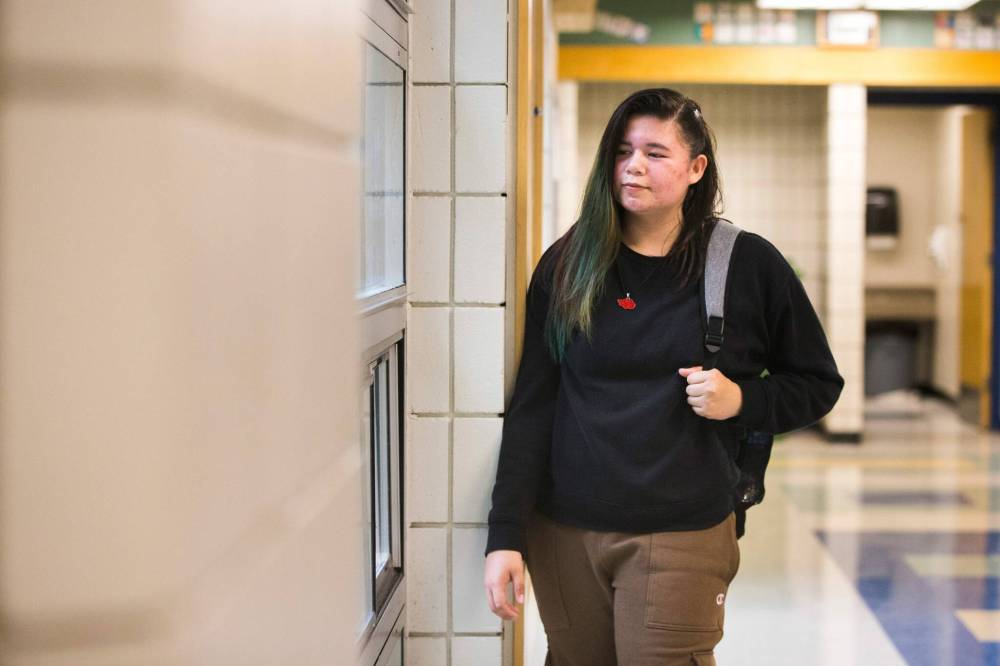
Last year, around 2,300 First Nation students who ordinarily live on reserves in Manitoba attended a provincial school to study grades 9, 10, 11 or 12.
Some teenagers are sponsored to study specialty programs in urban centres, including Thompson, Riverton and Winnipeg. Others, such as Shaundria, do not have access to a basic K-12 education program at home.
As public school classes get underway amid a new school year, they all must adapt to new routines in unfamiliar places with limited support systems.
“I get homesick pretty often. Not as much as I did (when I first moved), but I still get homesick — mostly for my parents because they’re awesome people and who wouldn’t miss their parents?”–Shaundria Yellowback
“It’s 2022. Canada is theoretically a first-world country, yet we’re still requiring kids from northern and isolated communities to leave their home, travel hundreds of miles… to go live with strangers and attend a high school in a strange city where they don’t know anybody,” said Karen Froman, a historian who teaches Indigenous history at the University of Winnipeg.
“We’re still requiring these kids to leave home and come under the care and control of non-Indigenous people who are complete strangers to them, just like in the residential schools.”
MIKAELA MACKENZIE / WINNIPEG FREE PRESS Shaundria Yellowback travelled almost 600 kilometres by plane to get to class for the first day of Grade 12.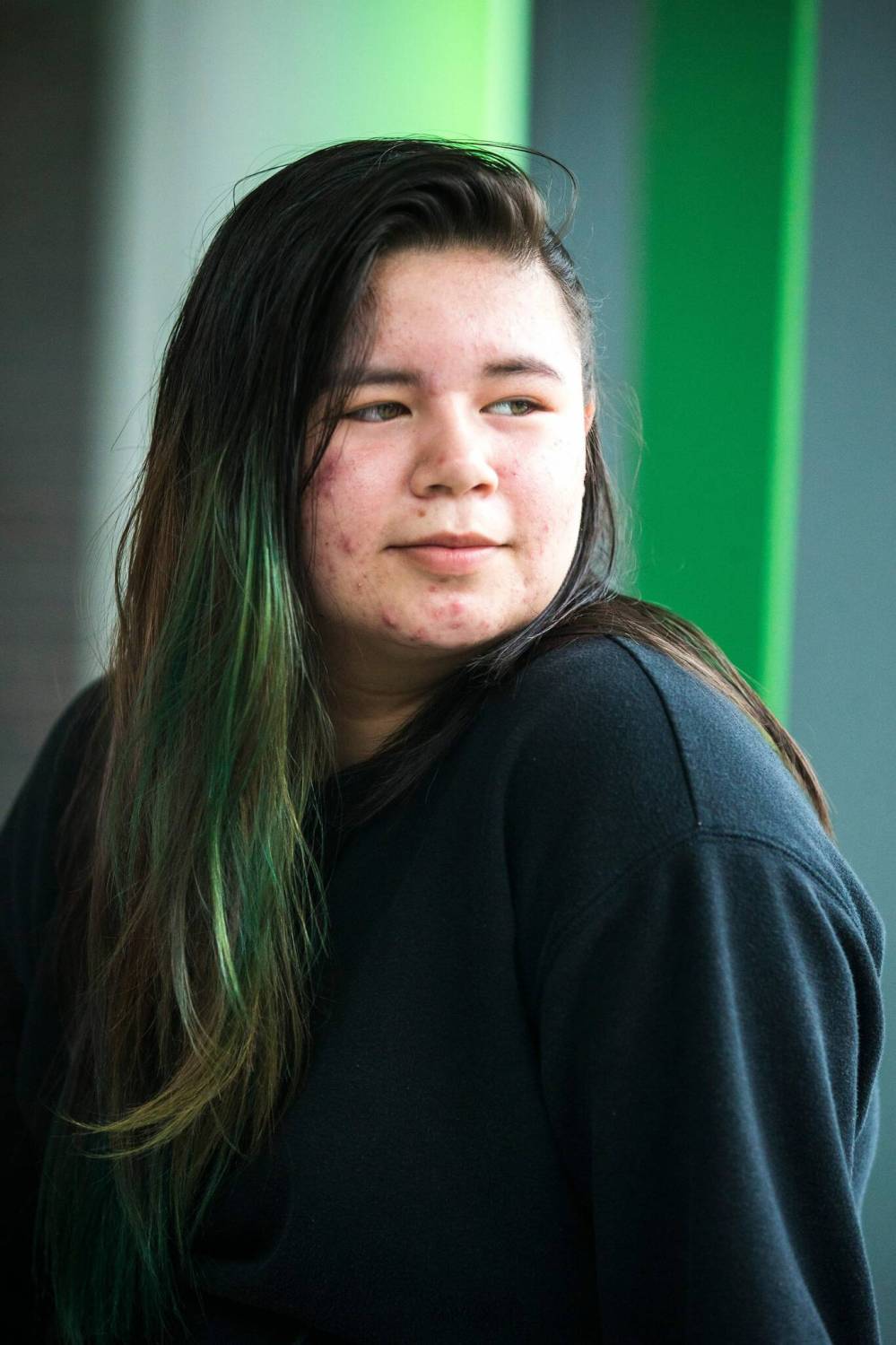
The federal government needs to “step up” and provide high school education on every reserve, said Froman, who is a member of Six Nations of the Grand River and is of mixed Mohawk and Irish-English-Dutch ancestry.
As far as the assistant professor is concerned, the arrangement places “a really unreasonable burden” on students who can be as young as 13 and pressures them to conform to white, urban standards.
When Shaundria first arrived in Winnipeg at age 15, the sheer number of people and the culture shock were overwhelming.
Maples’ student population is approximately 1,600. That’s roughly three times the size of Manto Sipi First Nation, located along the northern shores of God’s Lake in northeastern Manitoba.
What she misses most is fishing, hunting and being on the lake on a regular basis. But Shaundria said she has kept forcing herself to pack her bags and make the move, determined to cross the stage with a diploma in 2023.
“I have a lot of nieces and nephews, and they don’t have a role model, so I try to be that,” she said.
Throughout the school year, Grade 12 student Deni Sinclair said she misses outings to the beach with her mother and siblings in Berens River First Nation, a five-hour drive north of her apartment in the city.
MIKAELA MACKENZIE / WINNIPEG FREE PRESS Deni Sinclair is originally from Berens River First Nation.
Fifteen-year-old Kingsley Yellowback said he feels the absence of the scenery on his reserve in God’s River while he studies in the Manitoba capital.
Shaylene Bruce, 17, said she is grateful for her newfound independence and opportunities in the city, although she cannot help but feel she is being left out of major events at home.
“The worst part is leaving your family, feeling like you’re missing out on the growth of your little siblings, your nieces and nephews. It sucks watching from a distance,” said the Grade 12 student, who is a member of Poplar River First Nation.
Poplar River is slated to open a complete high school later in autumn. It did not launch in time for Shaylene’s final year, so she boarded an hour-and-10-minute plane ride to Winnipeg earlier this month.
Shaylene dropped out of Maples part way through her first year in the city, citing the toll of isolation — compounded by COVID-19 restrictions on gathering and in-person schooling — on her mental health. She was living with a distant family member at the time and struggling with mathematics.
“I felt like I was behind everyone else when I came here,” she said.
Teacher shortages, high educator turnover rates, trusting relationships between educators and learners, limited funding and family challenges are all factors that affect the quality of education in isolated communities.
MIKAELA MACKENZIE / WINNIPEG FREE PRESS Kingsley Yellowback, 15, says he feels the absence of the scenery on his reserve in God’s River.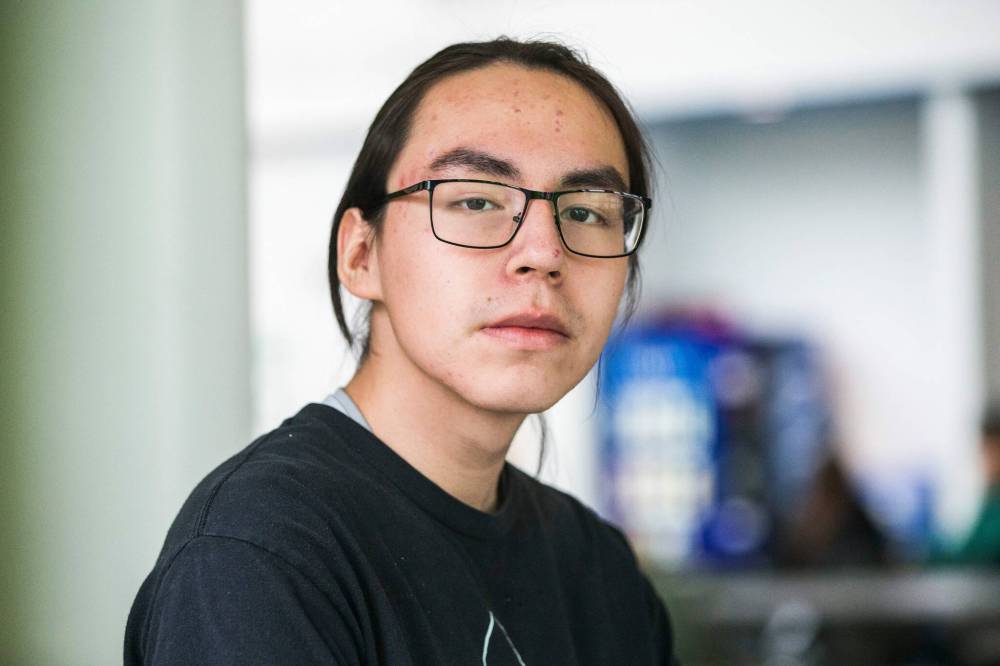
From academic gaps to racism to starting high school in Grade 10, one year after orientation sessions typically occur and friend groups begin to form, there are countless challenges northern students face when they have to move for high school, said Ryan Cook, one of the vice-principals at Maples.
“When an Indigenous student walks through the building and I see them, I don’t necessarily always see them for who they are personally,” said Cook, a Cree Winnipegger whose family hails from Misipawistik First Nation and Matheson Island.
“I see them for what has been handed to them and what types of challenges they face in their life. I start to see things on a bigger picture and I understand there needs to be specific things for them and there needs to be more programming for them because this country has put them at such a disadvantage.”
Those disadvantages can make students vulnerable, he said, adding awareness about street smarts and gang recruitment is important when learners arrive.
“The worst part is leaving your family, feeling like you’re missing out on the growth of your little siblings, your nieces and nephews. It sucks watching from a distance.”–Shaylene Bruce
Maples runs field trips and other activities targeted toward Indigenous students to build a sense of community, but the educator said not every student wants to participate and there could always be more offerings.
Seven Oaks School Division’s Wayfinders, a community-based mentorship and outreach program, provides tutoring services and other resources.
For members of Berens River, the community’s student services office organizes regular gatherings for teenagers in the city so they can all catch up, given teenagers are spread out at different high schools.
MIKAELA MACKENZIE / WINNIPEG FREE PRESS Shaylene Bruce dropped out part-way through her first year in the city due to the toll of isolation on her mental health.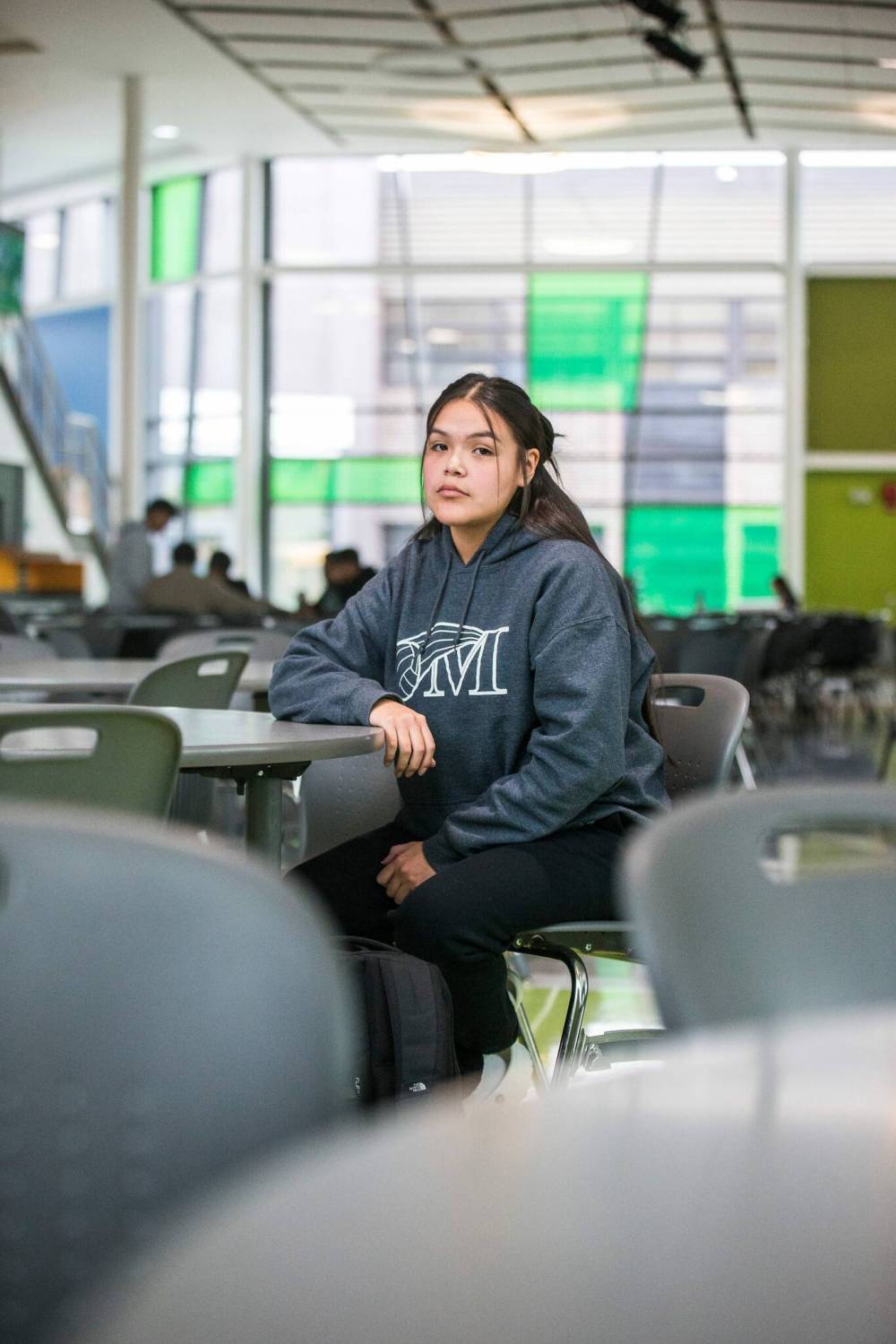
Sarah Disbrowe, private home placement and high school counsellor, wants to start running beading and drum-making workshops. Disbrowe is in charge of finding home placements for Berens River students — “a big thing that we battle with every year,” facilitating criminal record checks and communicating with all parties.
Host households receive $600 per month while students are given $177.65, including a fee to cover a monthly bus pass.
Disbrowe moved to the city with her eldest child so her daughter could complete high school here with her support several years ago. The mother of four is currently in Winnipeg with her two eldest children, Tianna and Tyvon, and her husband is home with their youngest kids.
“I would like all my family back together,” she said. Whether or not it affects her job, Disbrowe said she would love to see her home community start to offer Grade 12.
In nearby Bloodvein First Nation, students, educators and caregivers are celebrating an expansion to offer Grade 10 this year — a small, but critical step to keep families together longer.
“There are kids who’ve gone to Grade 10 in the city and were experiencing a lot of culture shock. They were failing. They were not emotionally stable to do the work that was given to them over there. There was not much support for them.”–Miskooseepi School principal Irene Rupp
Miskooseepi School principal Irene Rupp said they do not have the capacity to host all grades, but the latest addition is a welcome one that parents have long requested.
“There are kids who’ve gone to Grade 10 in the city and were experiencing a lot of culture shock. They were failing. They were not emotionally stable to do the work that was given to them over there. There was not much support for them,” Rupp said, adding some students got involved in drugs and gangs to fit in, in the past.
Given Ojibwa is often local students’ first language, many face challenges learning how to read and write fluently in English at a senior level, noted the longtime educator, who was born and raised in Bloodvein and left to complete high school at Assiniboia Residential School when she was a teen.
All of these challenges are long-standing and in part, why Bloodvein leaders partnered with colleagues across the Southeast Tribal Council to create a unique educational campus in Winnipeg’s Fairfield Park in 1995-96.
“The whole purpose of creating Southeast Collegiate was to have a high school for our Indigenous students to attend, run by Indigenous organizations, and to employ Indigenous people,” said Sheryl McCorrister, executive director and principal of the Grade 10-12 facility.
Before the turn of the century, the highest level of education students everywhere from Brokenhead Ojibway Nation to Poplar River could achieve at home was Grade 9. While high schools have since been built in many of the Cree, Oji-Cree and Ojibwa communities, gaps remain and the school continues to welcome nearly 150 pupils annually.
“We are always under the microscope, as Indigenous people.”–Sheryl McCorrister, executive director and principal of Southeast Collegiate
Ninety-three per cent of final-year students obtained their high school diploma in 2021-22. The five-year average is 78 per cent, owing to a significant drop in 2020 amid the COVID-19 pandemic.
McCorrister attributes the success to the school’s holistic approach, including thrice-daily meals, recreation programming, homework club, land-based learning and caring staff.
Upon their arrival, each student participates in an orientation session to learn about public transit use and safety in urban centres. Every pupil receives an individualized graduation plan. Learners are awarded for regular attendance and making the “principal’s honour roll” — a distinction given to anyone who earns an average of 80 per cent or above — on a monthly basis.
The executive director said she constantly reminds teenagers how strong they are for leaving home at such a young age to pursue their schooling and encourages them “to go above and beyond.”
“We are always under the microscope, as Indigenous people,” she said, adding she is frank with students about the importance of positive behaviour on and off school grounds.
Manitoba’s four-year graduation rate was 83 per cent in 2021. Among Indigenous students, it was 51 per cent, or 40 percentage points lower than the non-Indigenous average.
The ongoing requirement to leave home to attain a high school diploma is one of the factors that continues to drive that gap, said Froman, of the U of W.
The Manitoba First Nations Education Resource Centre opened Wapaskwa Virtual Collegiate in 2010 to run remote programs to fill the gap. However, reliable internet access, classroom space and skilled staff are all essential for a community to offer the option locally.
Given it is unlikely this annual migration of students will change in the short term, Froman said all parties — bands, public schools and the federal government — should collaborate to improve mental health support services for these students and provide 24-7 access to counselling.
MIKAELA MACKENZIE / WINNIPEG FREE PRESS Deni Sinclair (from left), Shaylene Bruce, Shaundria Yellowback, and Kingsley Yellowback all moved to Winnipeg to complete high school.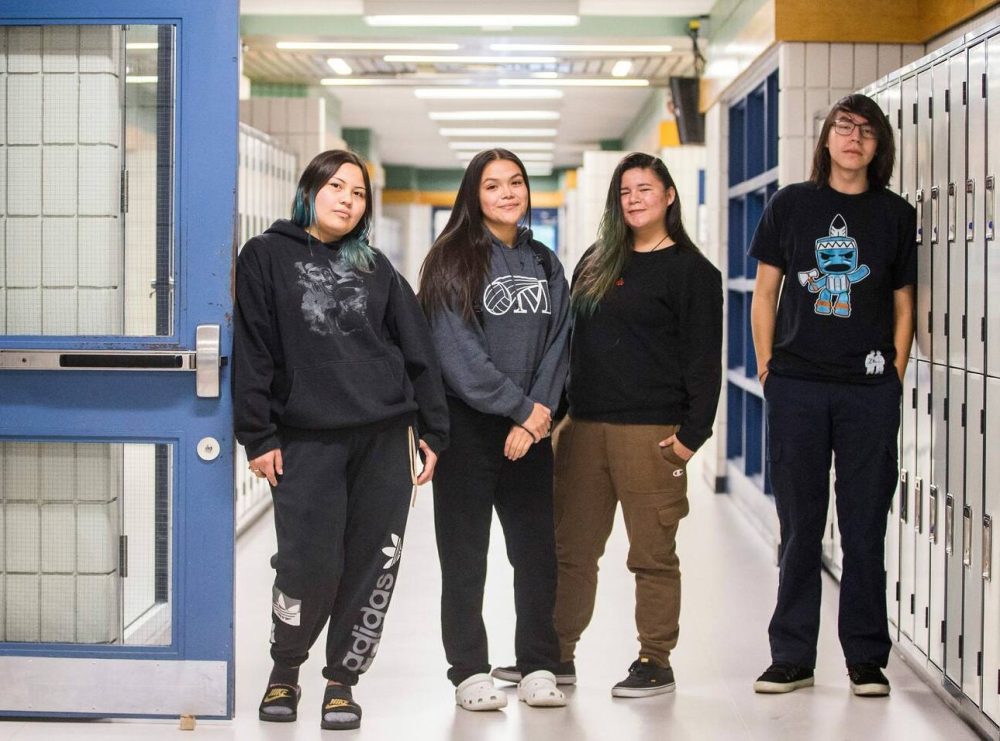
The academic noted that in order to acknowledge the countless challenges both on-reserve and off-reserve Indigenous students face in completing their education, visible and public recognition of their success is critical.
“Not only for the students who are graduating, but for the students who are coming behind them. The younger students can look at these older students as role models,” said the academic, noting special stoles and other celebrations instill pride in communities and break down negative stereotypes.
Cook said he is in the process of brainstorming ways to celebrate graduates at Maples and across Seven Oaks, in addition to the division’s annual graduation powwow. In the past, students have added beading designs to their caps and put eagle feathers in them.
If Shaundria was given the option to graduate in God’s River with the same quality of education offered in Winnipeg, she said she would have taken it.
The 17-year-old said learning her traditional language is incredibly important and there are few opportunities to study and practise Cree in Winnipeg.
“As a parent and as a grandparent, I cannot comprehend sending my 13-, 14-, 15-year-old child basically on their own to go live with maybe family, or maybe not. In some cases, it’s actually strangers. I wouldn’t do it.”–Charles Cochrane, executive director of the Manitoba First Nations Education Resource Centre
“There’s still a lot I want to learn about my culture and all the fishing places, all the camping places and hunting spots,” she said. “There’s still a lot I have yet to learn.”
The executive director of the Manitoba First Nations Education Resource Centre said every community should have a high school if they want one, according to the treaties.
Charles Cochrane said he considers himself and his relatives fortunate, because Ebb and Flow First Nation offers up to Grade 12.
“As a parent and as a grandparent, I cannot comprehend sending my 13-, 14-, 15-year-old child basically on their own to go live with maybe family, or maybe not. In some cases, it’s actually strangers. I wouldn’t do it,” he said.
In an emailed statement, a spokeswoman for Indigenous Services Canada said all students from Manitoba First Nations have access to secondary studies, either at home or in a town or municipality throughout the province.
“Indigenous Services Canada supports First Nations control of First Nations education,” wrote Jennifer Cooper. “(Ottawa) provides funding directly to First Nations and designated First Nations school authorities to support elementary and secondary education for First Nations students.”
maggie.macintosh@freepress.mb.ca
Twitter: @macintoshmaggie

Maggie Macintosh reports on education for the Winnipeg Free Press. Funding for the Free Press education reporter comes from the Government of Canada through the Local Journalism Initiative.
Our newsroom depends on a growing audience of readers to power our journalism. If you are not a paid reader, please consider becoming a subscriber.
Our newsroom depends on its audience of readers to power our journalism. Thank you for your support.
History
Updated on Friday, September 16, 2022 9:00 PM CDT: Deck fixed

